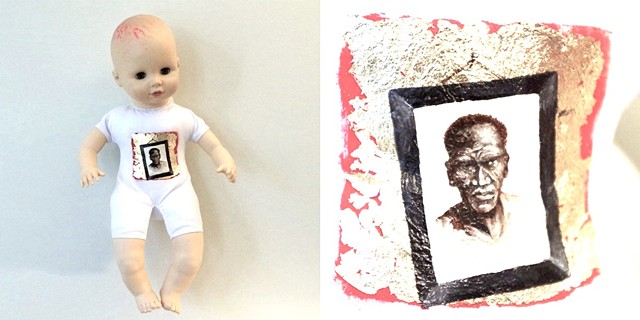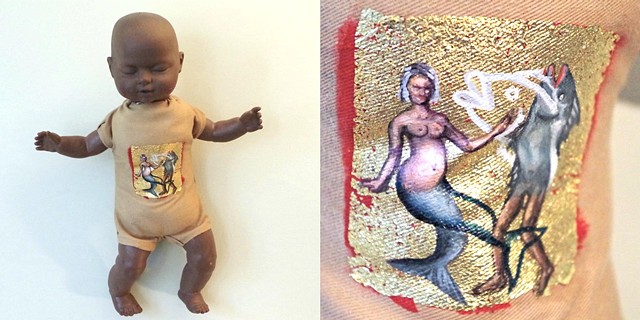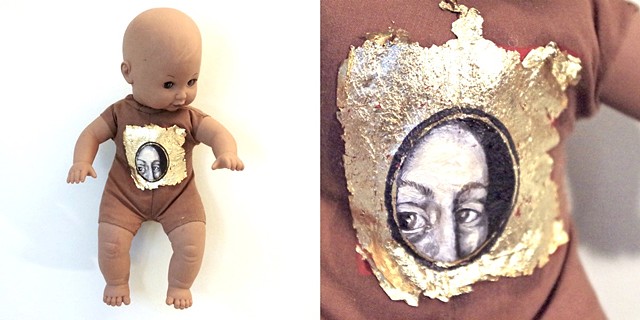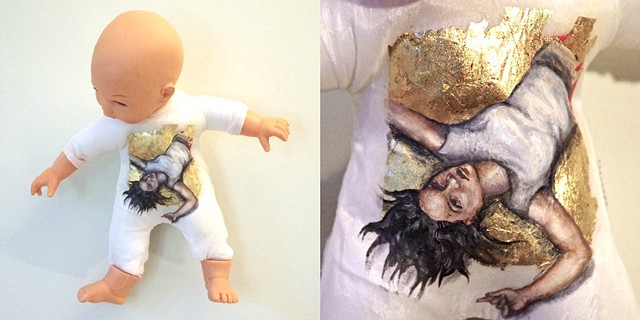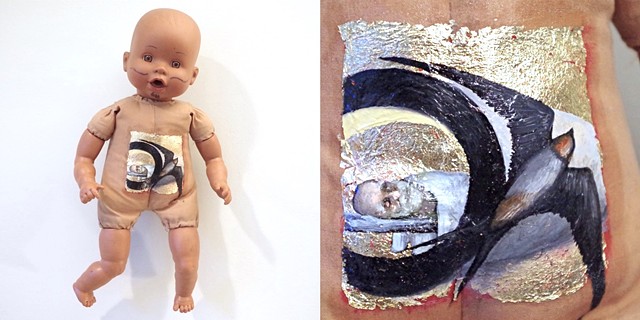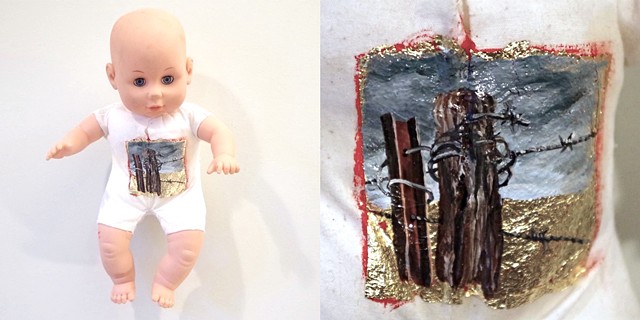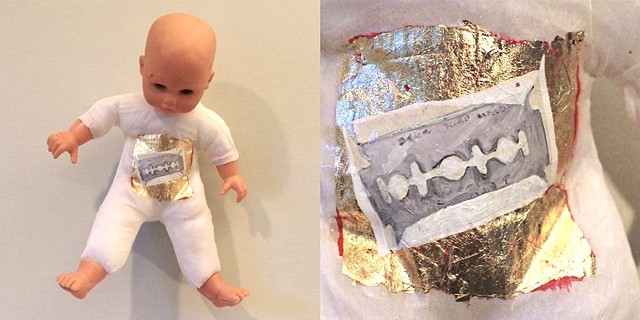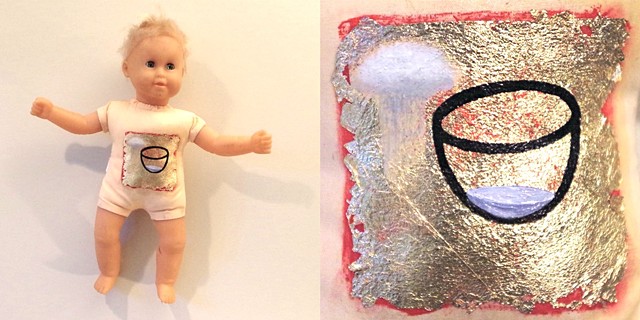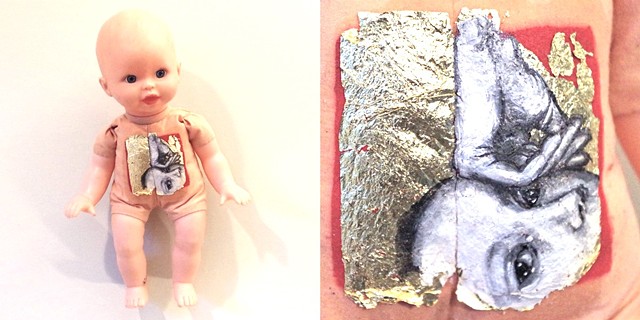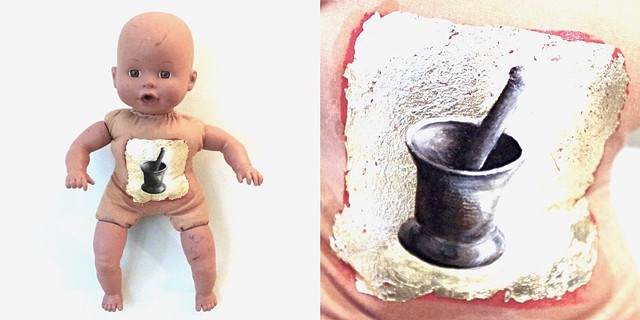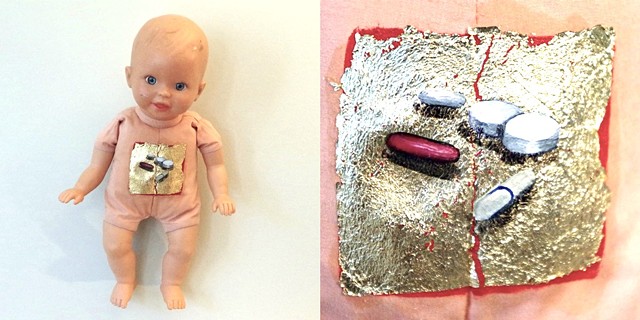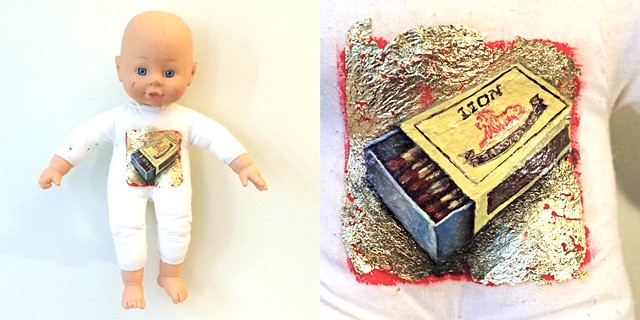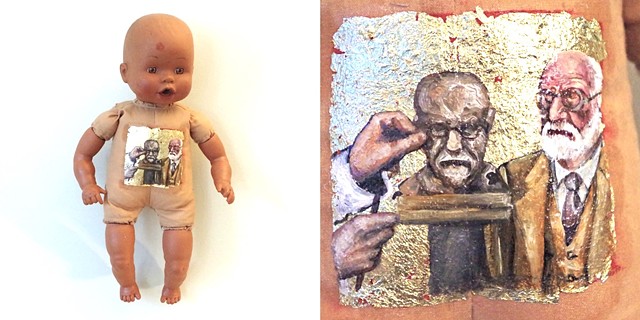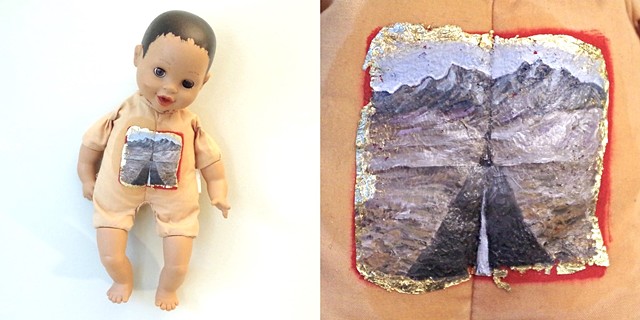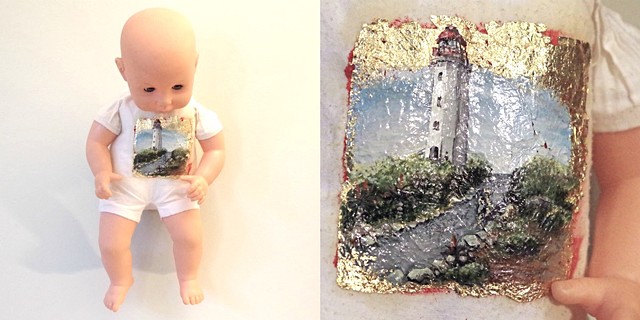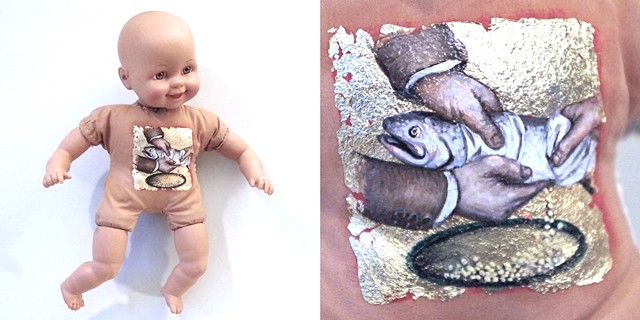Doll Canvas Series
I have become interested in second hand shops and second hand objects. In Atlanta there are many consignment stores and charity thrift shops that have become my wandering places. Some objects are less likely than others to loose the inprint of their previous owners. Like shoes: If you are brave enough to put your hand into the depths of a second hand shoe and run your fingers along the ridges and grooves that someone else’s particular and idiosyncratic toes have molded into the leather, or rubber or plastic – you will find it a very intimate experience.
The dolls in these places are like that too. The smudges and bite marks, the nail polished toes and fingertips, the matted hair, the rolled back, pushed in, eyes and the ball-point pen scribbles, all speak of very intense, personal and intimate human experiences. The doll is so potent to the child – it’s function as a signifier is so primary, direct. When I hold these old dolls I am engrossed by the power they have had in the past and I am privy to it through the marks the children have left.
I started taking these dolls home and stacking them up in my studio. I was drawn to the soft bellied dolls with their abdomens little canvases: white calico canvases with legs and arms and heads!
The first step in my process is to reinforce the idea that these are precious, sacred even, relics of profound emotional developmental processes in the children who played with them. So I prime my canvases with red bole and gold leaf the ‘canvas’. This reminds me of icons from different cultures – holy and venerated. The scale of the ‘canvas’ I gild reminds me of Chinese burial money or joss papers. Also of the gold leaf squares people in Thailand rub onto sculptures of Buddha and other venerated surfaces. And the small golden icons from Byzantium and illuminated illustrations from books like ‘The Aberdeen Bestiary’, made in England around 1200, are intimate and precious paintings, often on a golden, square format.
The paintings are intimate and finely detailed depictions of subjects varying from personal signifiers (‘Fishman and mermaid’) to small narratives (‘Portrait of portrait of Freud’)

